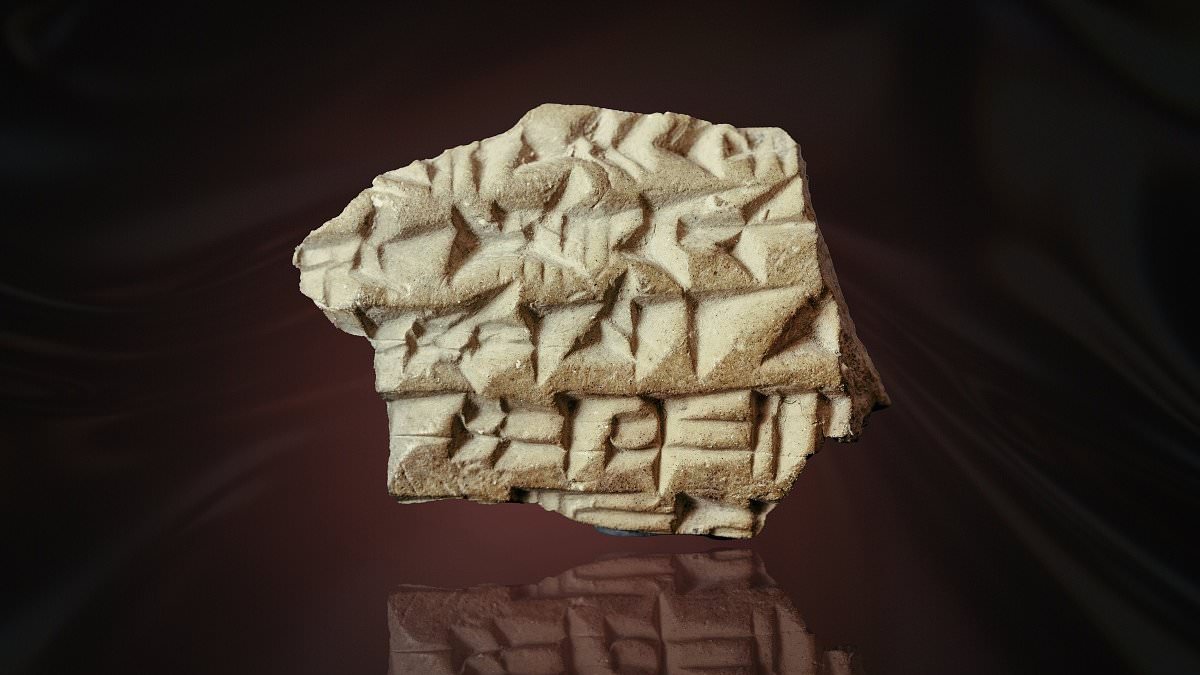Copyright dailymail

Seal bearing ancient language found in Jerusalem confirms Bible story in the Old Testament READ MORE: Mysterious coin linked to Jesus' biblical prophecy discovered By STACY LIBERATORE, US SCIENCE & TECHNOLOGY EDITOR Published: 19:08 GMT, 28 October 2025 | Updated: 19:08 GMT, 28 October 2025 Archaeologists in Jerusalem have uncovered an ancient Assyrian inscription that may shed light on historical events described in the Old Testament. The discovery, a tiny 2.5-centimeter pottery shard inscribed in Akkadian cuneiform, the world's oldest written Semitic language, was uncovered near the Temple Mount and dates back approximately 2,700 years. Researchers from Bar-Ilan University deciphered the inscription, revealing what appears to be a complaint from the Assyrian empire regarding a late payment expected from the kingdom of Judah. The text specifies the first of the month of Av, the 11th month of the Hebrew calendar, as the due date for the delayed tribute, suggesting a formal communication between the Assyrian empire and the kings of Judah. Scholars noted that this could correspond to events recorded in 2 Kings 18 and 19, during the reign of King Hezekiah. These biblical passages describe Hezekiah being required to pay 300 talents of silver and 30 talents of gold to King Sennacherib of Assyria, a tribute meant to secure Judah from Assyrian aggression. Dating of the shard places it around the time of Hezekiah's reign, though researchers noted it could also originate from the period of his son Manasseh or even King Josiah. Dr Peter Zilberg of Bar-Ilan University, who was part of the research team, said the fragment's small size belies its significance. The discovery, a tiny 2.5-centimeter pottery shard inscribed in Akkadian cuneiform, the world's oldest written Semitic language, was uncovered near the Temple Mount and dates back approximately 2,700 years The rare sealing was discovered next to an ancient drainage channel 'This small fragment may be short, but it tells a very important story,' he said. 'It's part of an inscribed royal sealing, a clay bulla used to close or authenticate letters and official documents. What we're seeing here is direct evidence of official communication between Assyria and Judah.' This is believed to be the first discovery of its kind. Dr Anat Cohen-Weinberger of the Israel Antiquities Authority (IAA), which conducted the excavation, explained how the shard was traced back to Assyria rather than Jerusalem. Petrographic analysis revealed that the pottery's composition differs from local materials, with mineral content matching the geology of the Tigris Basin region, home to major Assyrian cities such as Nineveh, Ashur, and Nimrud/Kalḫu. This suggested the shard may have been part of a shipment of official Assyrian documents or correspondence to Judah. Experts say the find also highlights the complexity of ancient diplomacy, showing that even small kingdoms like Judah were engaged in detailed negotiations with one of the era's superpowers. Such correspondence would have been vital to navigating the political pressures of the time, especially when facing a powerful empire like Assyria. While the inscription does not directly cite a specific biblical passage, it provides tangible evidence of the kingdom of Judah's interactions with the Assyrian empire. 'While we cannot determine the background for this demand, whether it stemmed from a mere technical delay or carried political significance, the very existence of such an official appeal would seemingly attest to a certain point of friction between Judah and the imperial government,' the researchers said. The text specifies the first of the month of Av, the 11th month of the Hebrew calendar, as the due date for the delayed tribute, suggesting a formal communication between the Assyrian empire and the kings of Judah Dr Peter Zilberg of Bar-Ilan University, who was part of the research team, said the fragment's small size belies its significance (PICTURED) The discovery offers historians and biblical scholars a rare glimpse into the diplomacy, economics, and political pressures of the ancient Near East. It also reinforces the historical context of the Bible's accounts of Judah's tributes to Assyria, demonstrating that these stories were grounded in real-world interactions between kingdoms. As analysis continues, the tiny shard stands as a potent reminder of how much history can be preserved in even the smallest of artifacts, connecting biblical narrative with archaeological reality and enriching our understanding of life in ancient Jerusalem. Share or comment on this article: Seal bearing ancient language found in Jerusalem confirms Bible story in the Old Testament Add comment



